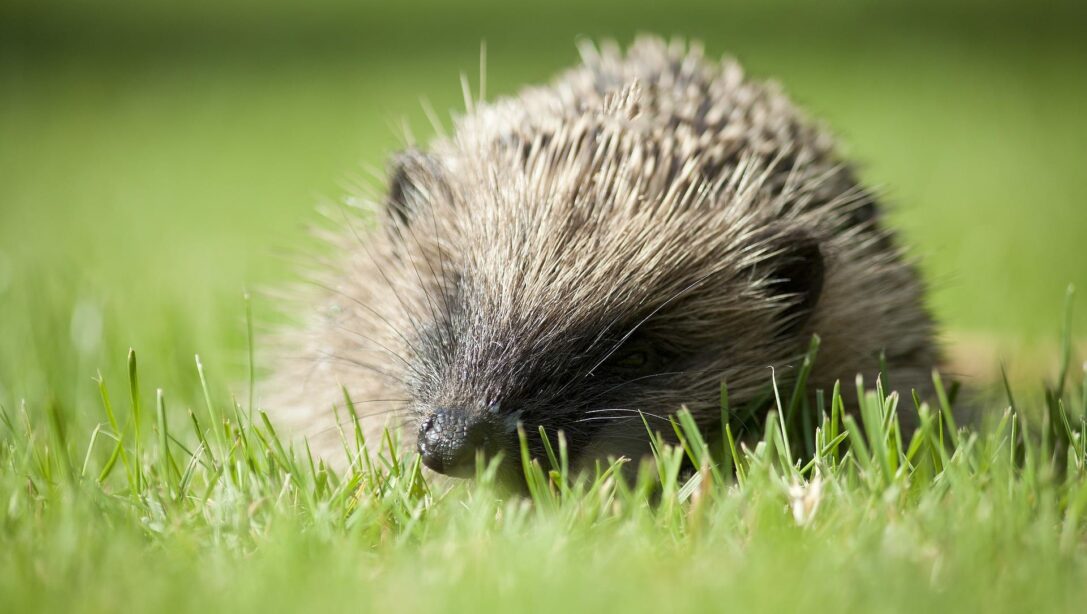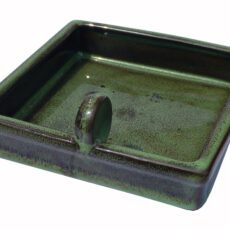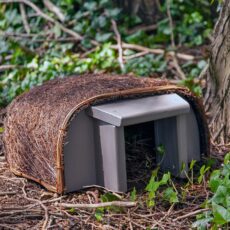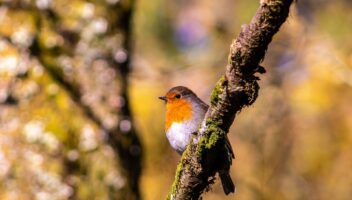Like so many species of wildlife, the hedgehog population in the UK is in terrible decline. It is estimated the population has dropped from 30 million to 1 million since the 1950’s as the result of urbanisation, climate change and pesticide use.
We can all do our bit to try and support the hedgehog population by lending a helping hand with the right food and creating a hedgehog friendly garden.
If you find a hedgehog in your garden and you think it may be poorly, we also have valuable advice from Helping Hands Hedgehog Rehabilitation in Southampton, Hampshire.
View Our Collection of Wildlife ProductsCreating a Hedgehog Friendly Garden
One of the reasons hedgehogs might not visit your garden is if there is a lack of entrances and exits. Talk with your neighbours about creating ‘hedgehog runways’ which are very simply, paths between gardens, so any visiting hedgehogs don’t become blocked off in one garden. This allows them to roam freely looking for food and finding mates.

If are a particularly tidy gardener try and get into the habit by leaving a rough patch in your garden with a pile of logs and leaves. This will make an ideal spot for hedgehogs to nest or hibernate in during winter. While you’re in the swing of letting your garden go a bit wild, leave a longer patch of grass on your lawn where hedgehogs can happily hunt out their main natural food source of insects (primarily beetles, earthworms, caterpillars and to a smaller extent slugs).
A garden full of a range of plants is more likely to be one that is friendly for hedgehogs. Plants that attract insects bring in a source of food for hedgehogs, while others provide spots for them to hide in and under. Recommended garden plants for hedgehogs include ornamental grasses, such Carex varieties, Erigeron, Sedum, Salvia and herbs.
If you have a pond in your garden, make sure there is a way for hedgehogs to get out if they fall in. Hedgehogs are good swimmers, but can struggle to escape from concrete ponds if there is no easy route out.
If you are having a bonfire, be sure to check your log pile to make sure there are no hedgehogs hiding in it before your light it.
Make sure there is no netting left in the garden, as hedgehogs can get stuck in it.
Supporting Hedgehog Hibernation
In the UK, hedgehogs usually hibernate from late autumn through to mid spring. They will typically change their hibernation spot at some point during this time, so it is possible to see them on the move in the winter. In very mild years, they may not even begin their hibernation until December.
With this in mind, it is worth leaving out a supply of hedgehog food and water even during hedgehog hibernation times.
It is important to leave hibernating hedgehogs in peace. Try not to do any late tidying of piles of leaves or logs, in case of disturbing a slumbering hedgehog.
Important Reminder for Spring
When the weather warms and spring begins, we are eager to get back into our gardens, tidying, planting and giving the lawn its first mow of the year. Before mowing and strimming in particular, check underneath piles of leaves, logs, and compost for hiding hedgehogs. Every year a number of hedgehogs unfortunately suffer injuries from lawn machinery.
Food for Hedgehogs

If you have a hedgehog in your garden, put out a bowl of food. Peak feeding times are around March, when they emerge from hibernation, May when young are born and late autumn when they prepare for their winter slumber. It is, however, worth feeding all year around as hedgehogs do move a little even during hibernation (see below).
You can get specially designed hedgehog foods that are high in protein. Alternatively, cat food is fine but opt for chicken-based kibble and don’t give beef, fish, soya or cereal-based cat food. Don’t give them mealworms as they’re high in fat but low in calcium, so can lead to metabolic bone disorder.
Leave out a shallow bowl of fresh water. Don’t give them milk, as this can aggravate their digestion systems.
Food and water bowls can be a breeding ground for bacteria, so be sure to have good food bowl hygiene and wash them regularly.
Creating a Hedgehog House
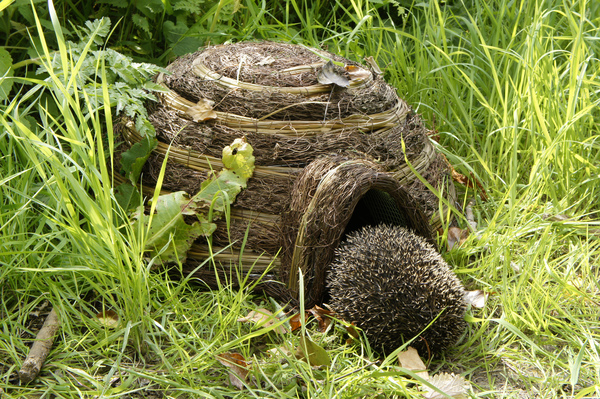
A hedgehog house provides a safe retreat for winter hibernation as well as a place to raise young in late spring.
You can construct a hedgehog house yourself — this could be a more luxurious wooden structure with tunnel, or simply a pile of logs of compost heap. You can also find ready-made hedgehog houses in the wildlife sections of Hillier Garden Centres.
*Unlike similar houses on the market the Wildlife World Igloo Hedgehog House does not have a wire mesh interior, it instead has a heavy steel frame and a smooth waterproof membrane. The product has been sold for numerous years and has received many positive reviews.
What To Do if you Find a Poorly Hedgehog
Helping Hands Hedgehog Rehabilitation in Southampton, Hampshire is a specialist in hedgehog rescue. Their three-step process includes inside care and rehabilitation including health checks, gradual introduction to living outside and finally release back into the wild. Founder Laura McCarthy shares some advice should you find a potentially poorly hedgehog in your garden.
- A healthy hedgehog is quite round in shape and physically active.
- A poorly hedgehog could be one that looks thin, is obviously ill or injured, or acting in an unusual way – circling around, not moving at all. A hedgehog out in the daylight is also a sign that something is wrong. If the hedgehog is wheezing with white discharge from their nose they need urgent attention as this could be pneumonia or worms. A shaking hedgehog is also a medical emergency.
- If you suspect you have found a poorly hedgehog, or if you are not sure, err on the side of caution and seek help from a professional – i.e. your local vet or, if not available, hedgehog rescue centre
- Always check the area near to where your poorly hedgehog has been found before taking them anywhere, in case they have any baby hedgehogs nearby.
- Vets will treat hedgehogs free of charge. They will then find a rescue / rehabilitation home where it can recover.
- While leaving food for healthy hedgehogs is a good idea, if the hedgehog in your garden is unwell just leave out water, as they could be dehydrated. A large meal in this situation could be fatal for the hedgehog.
Visit the wildlife section at your nearest Hillier Garden Centre to find food and shelter for hedgehogs, along with a wide range of products to help support nature in your garden.


